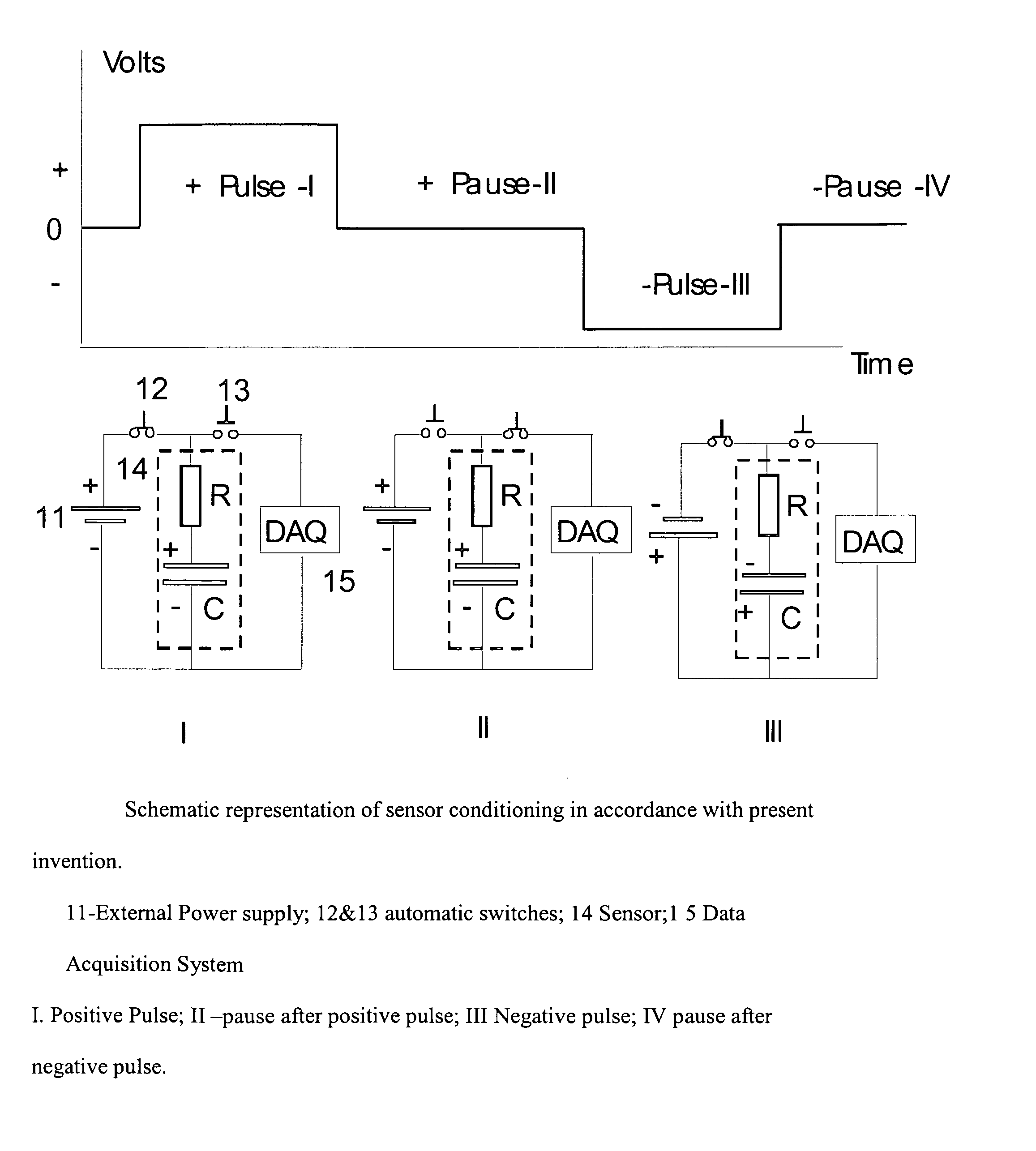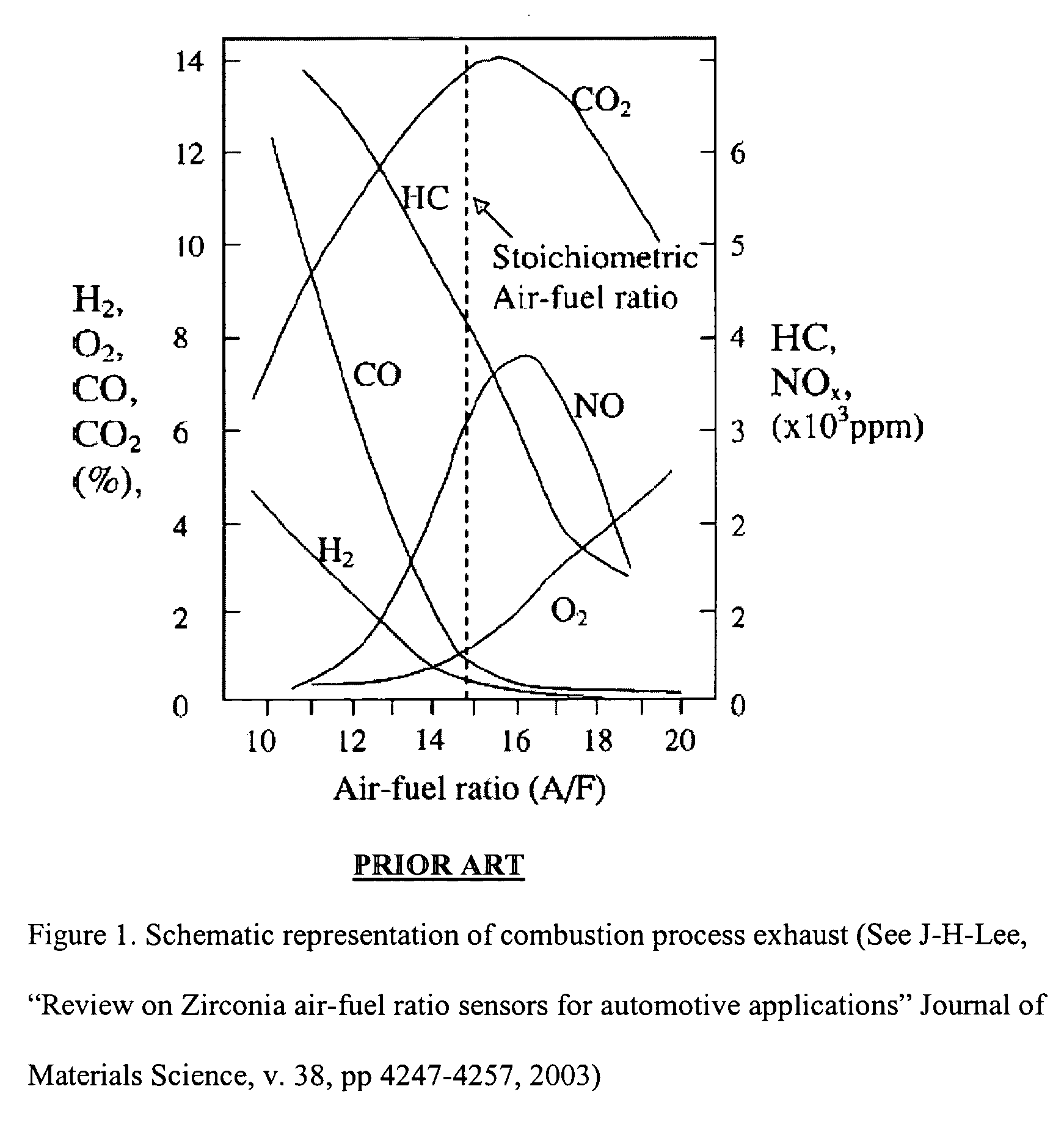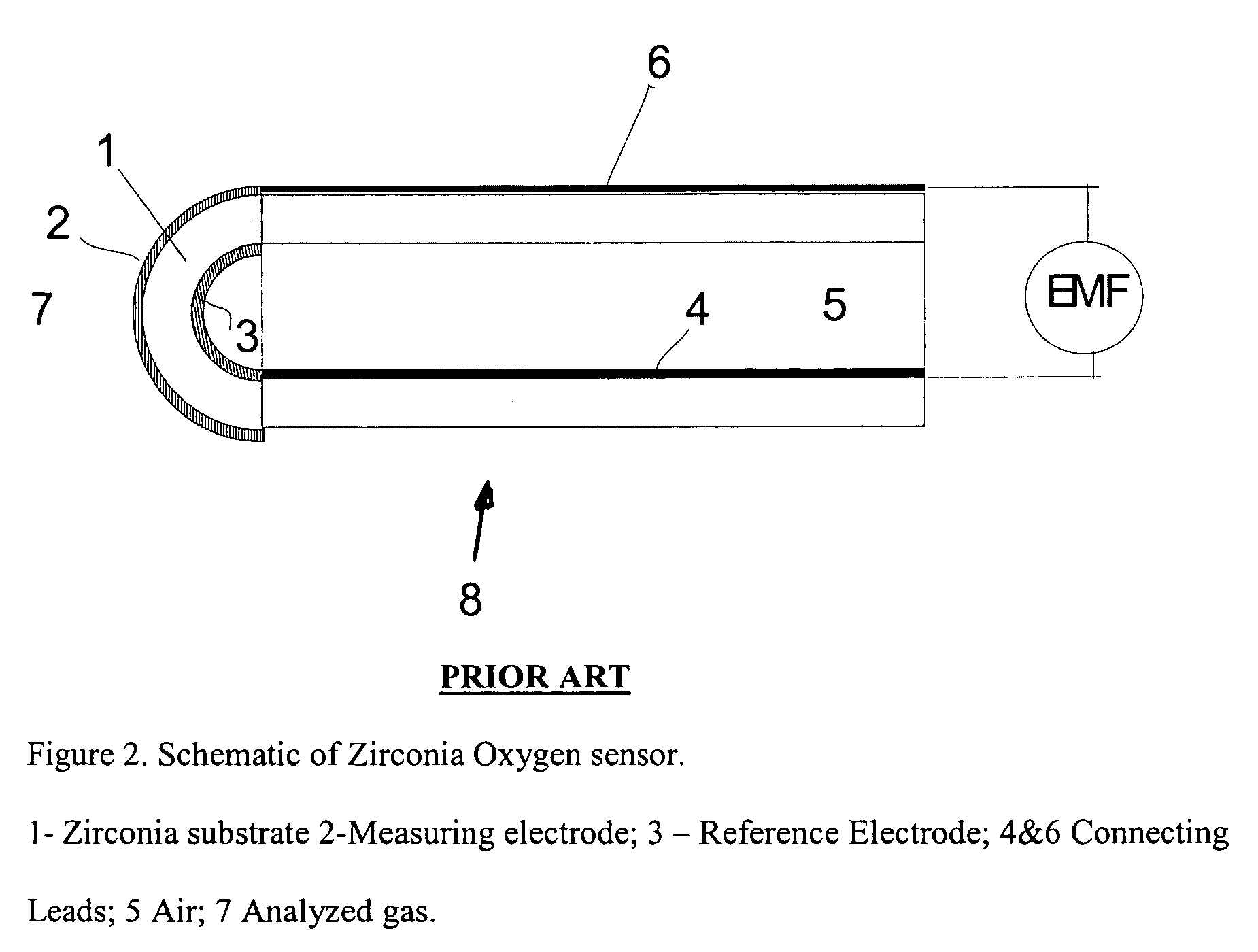Method of sensor conditioning for improving signal output stability for mixed gas measurements
a technology of mixed gas and signal output stability, applied in the field of gas sensors, can solve the problems of reducing the sensor output, not allowing the development of a viable commercial sensor, and inversely proportional to the generated curren
- Summary
- Abstract
- Description
- Claims
- Application Information
AI Technical Summary
Problems solved by technology
Method used
Image
Examples
example 1
1. EXAMPLE 1
Nitrogen Oxide (NO) Measurements
[0050] According to one example of the preferred embodiment of the present invention a concentration of NO was measured by using a traditional zirconia oxygen sensor and the proposed conditioning treatment. An Exhaust Gas Oxygen sensor (EGO) (capable of accurate measurements of oxygen concentrations in a wide range 0.5-10%) was placed inside a heated furnace with the temperature of ˜510° C. The sensor was equipped with an internal heater and the heater voltage was set at V=10 Volts. The sensor measurement electrode was exposed to different mixtures of N2; O2; NO; NO2, and CO gases, simulating conditions in the combustion process exhaust.
[0051] To demonstrate advantages of the proposed method, we first exposed sensor to pulse changes in the concentration of NO (0-1000 ppm) at O2 concentration of 3% (balance N2). FIG. 8 shows the EGO sensor mV response to applied NO. Sensor response is rather weak (<15 mV) and shows significant drift of th...
example 2
Measurements of CO
[0060] Sensitivity to different gases in the exhaust gas mixture can be varied in the preferred embodiment of the present invention by varying amplitude of the conditioning voltage pulses. FIG. 20 shows sensor response to 1500 ppm CO (at 2% O2) while subjecting sensor to conditioning treatment with the amplitude of conditioning voltage pulses=1 Volts. Sensor sensitivity to CO has significantly improved as compared with the conditioning treatment with the voltage amplitude of 2.5 Volts
[0061] An alternative method of CO / NOx detection can be based on measuring the charge / discharge current during pulses and pauses. FIG. 21 shows a diagram of these measurements. Sensor (14) is represented by resistor R and capacitor C connected in series. During a positive Pulse (I), the sensor is connected with the power supply (11) by closing the switch (12) and opening switch (13). The measuring sensor electrode (exposed to analyzed gas) is charged positively according to the polar...
PUM
| Property | Measurement | Unit |
|---|---|---|
| temperature | aaaaa | aaaaa |
| voltage amplitude | aaaaa | aaaaa |
| polarity | aaaaa | aaaaa |
Abstract
Description
Claims
Application Information
 Login to View More
Login to View More - R&D
- Intellectual Property
- Life Sciences
- Materials
- Tech Scout
- Unparalleled Data Quality
- Higher Quality Content
- 60% Fewer Hallucinations
Browse by: Latest US Patents, China's latest patents, Technical Efficacy Thesaurus, Application Domain, Technology Topic, Popular Technical Reports.
© 2025 PatSnap. All rights reserved.Legal|Privacy policy|Modern Slavery Act Transparency Statement|Sitemap|About US| Contact US: help@patsnap.com



